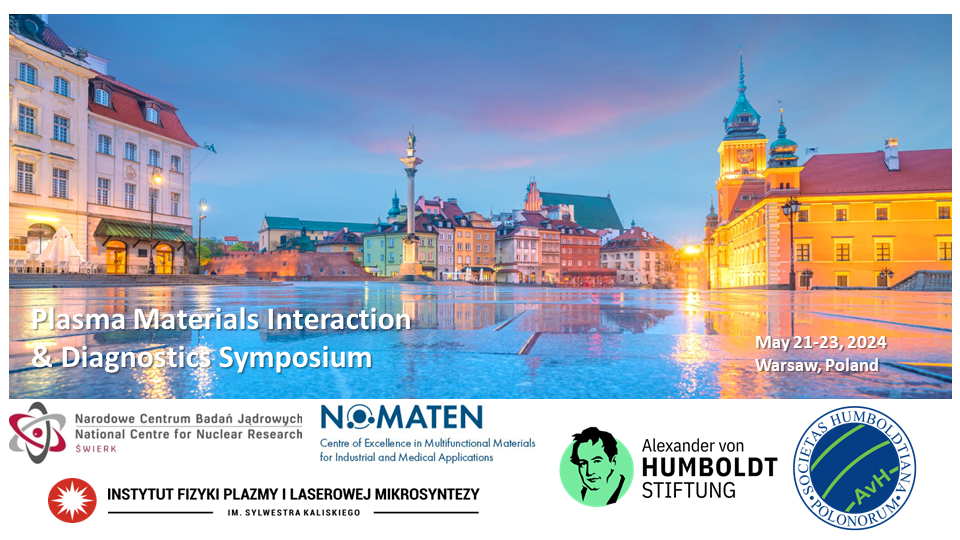Speaker
Description
Once upon a time, when carbon based materials were expected to be applied in the ITER
divertor, laser-based techniques were proposed as a tool for co-deposit removal of the
chemical erosion products. To monitor the removal progress, the observation of deuterium
alpha line in the laser produced plasma was proposed. Then tungsten replaced carbon which
mitigated chemical erosion and laser-based cleaning techniques became irrelevant.
Nevertheless, it was revealed that the simple observation of the deuterium line may be
expanded to measurements of the broad optical spectrum by the means of LIBS (Laser
Induced Breakdown Spectroscopy) technique, and thus become very useful not only for fuel
retention quantification but for monitoring of the chemical composition of the wall.
With its potential of being contactless and non-interfering diagnostics, LIBS became an
important element of the research in PWI (Plasma Wall Interactions) area, which was under
intensive investigation of numerous teams from Europe and China. The advantages of this
effort demonstrated successful analysis of the surface materials in EAST and WEST
tokamaks and deployment of the remotely controlled LIBS head to conduct LIBS
measurements at FTU. Scheduled on summer 2024 the experiment with remotely controlled
LIBS head at JET will be the final prove that LIBS constitutes a technique utterly relevant for
ITER.
Despite these achievements, applying LIBS to the next-step fusion device remains challenged
by uncertainties. These uncertainties stem from the undetermined morphology of co-deposits
in ITER and potential issues with controlling laser beam and plasma parameters. These
control issues can lead to inaccuracies in estimating the chemical composition of plasmafacing components. Additionally, the vast amount of measurement data expected in ITER
could further complicate the diagnostic performance.
On a positive note, recent years have seen the emergence of new tools that capitalize on large
datasets. These tools are artificial intelligence (AI) methods, particularly Artificial Neural
Networks (ANNs) and Convolutional Neural Networks (CNNs). These methods enable deep
learning, a technique highly adept at identifying patterns in data. Models built using these
methods have already demonstrated superior performance in various scientific, industrial, and
information technology tasks. Recognizing this potential, the IPPLM team began work on
adapting these methods to LIBS for PWI research in 2020.
After presentation of the crucial achievements of LIBS in fusion technology this contribution
will focus on the achievements and plans for application of AI methods in this field.

